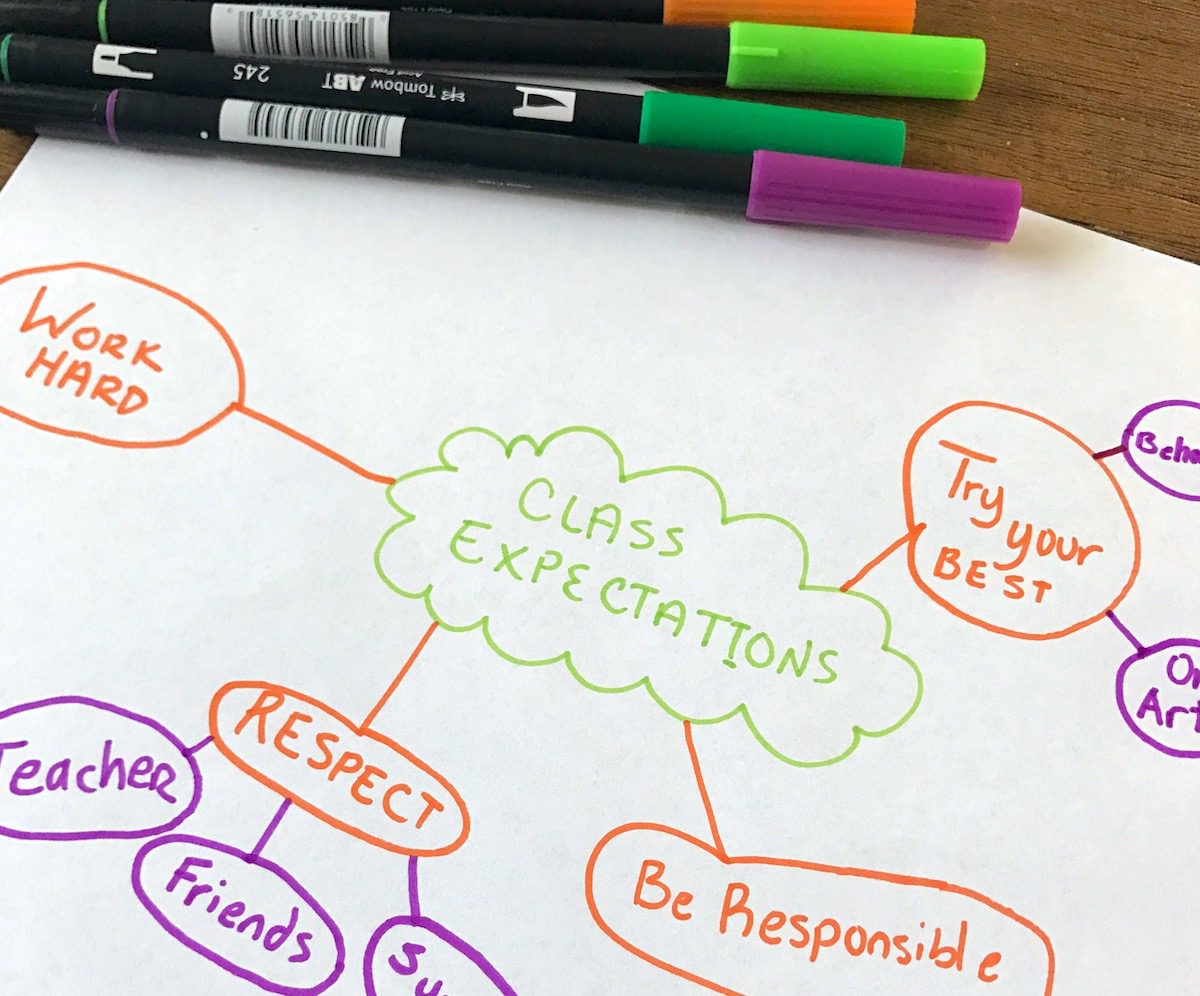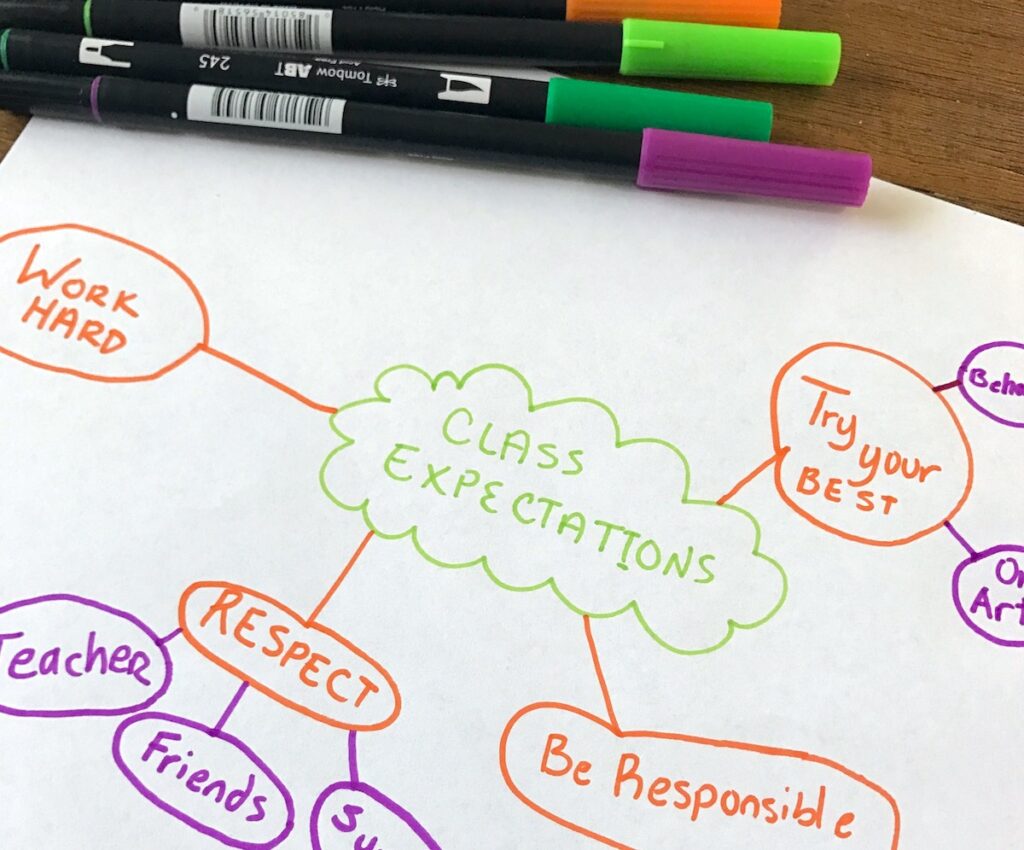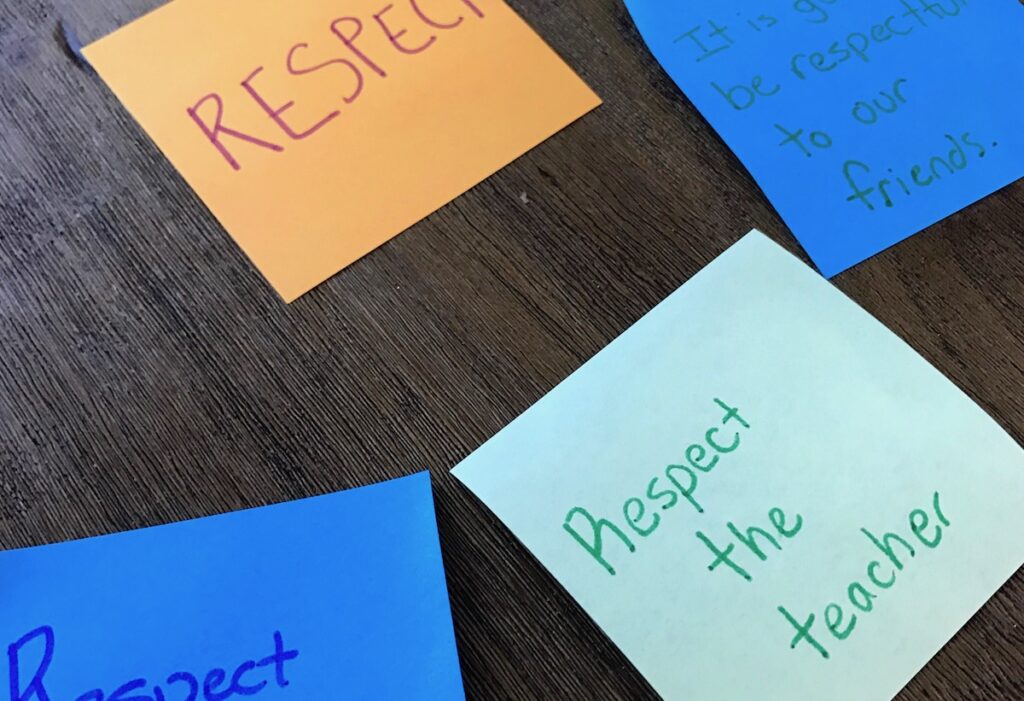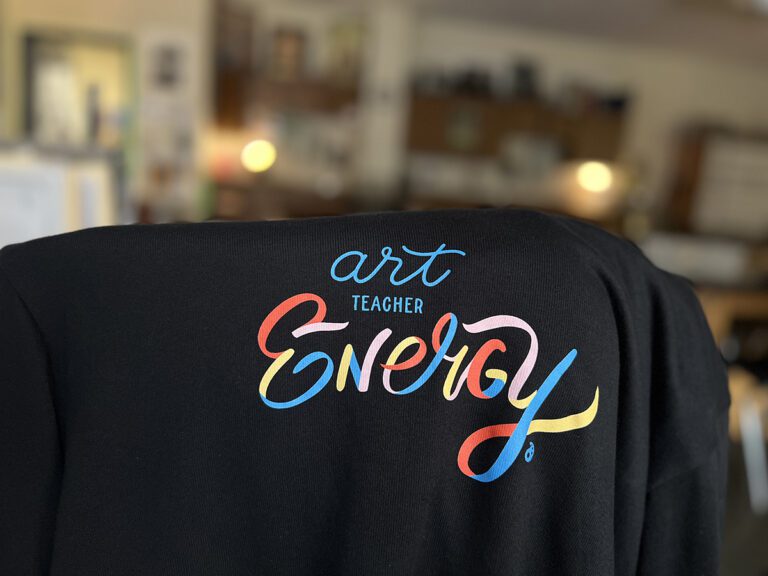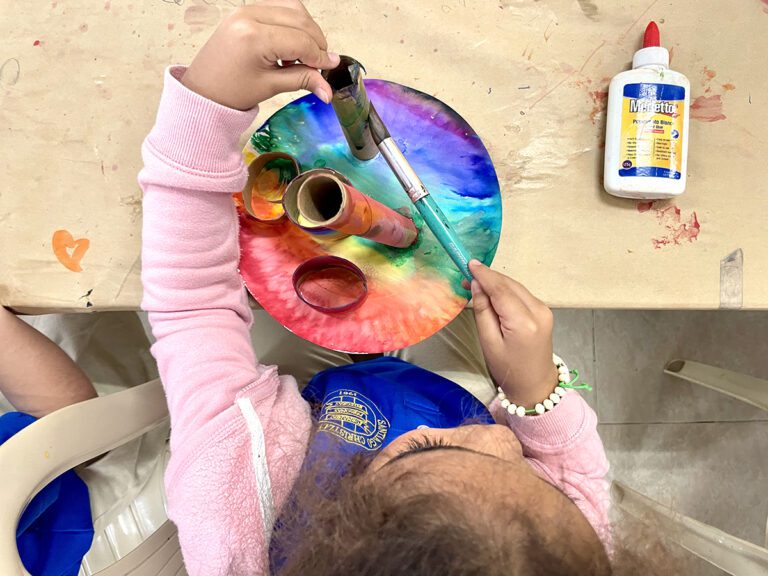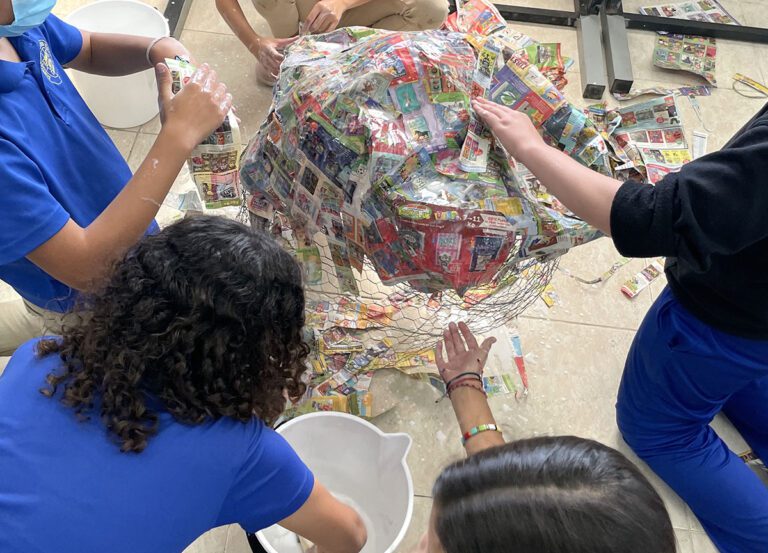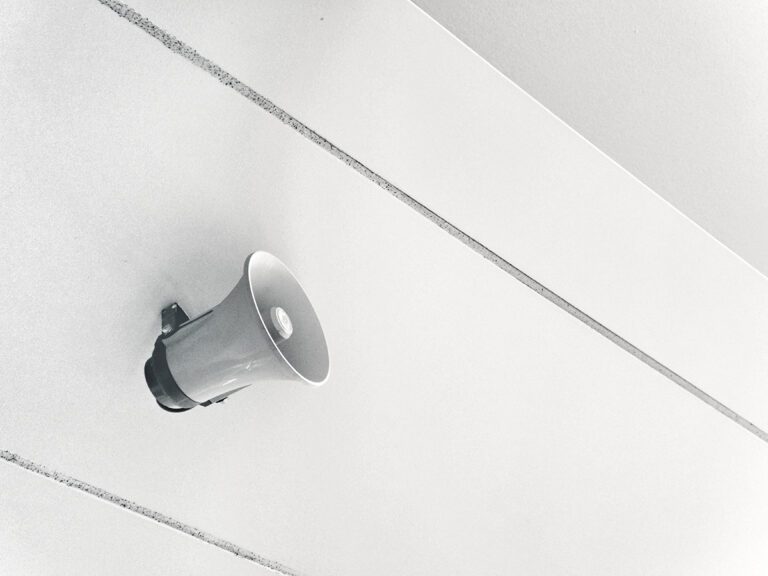The hustle and bustle of a new school year can get overwhelming. This is true because of things like curriculum planning, attending meetings, and organizing supplies, but also because you have to teach students the routines, procedures, and rules of the art room.
Because we have so many classes, the repetitive nature of this can grow tiresome. That’s why, in my classroom, I believe in creating expectations with my students.
Creating expectations with students is an empowering activity to help build the community and culture of the art room.
Allowing students to take ownership over their environment shows them you value their thoughts. In the book, The Classroom of Choice: Giving Students What They Need and Getting What You Want, author Jonathan Erwin says, “One of the most effective and practical ways teachers can give students a say in the classroom is by allowing them to participate in developing the classroom rules or behavior guidelines.”
From experience, I find teachers value leadership that takes their ideas and opinions into account when creating building norms or making changes in the school environment. So, you can see how this would work well with students, too!
Here are 3 benefits to creating classroom expectations with your students.
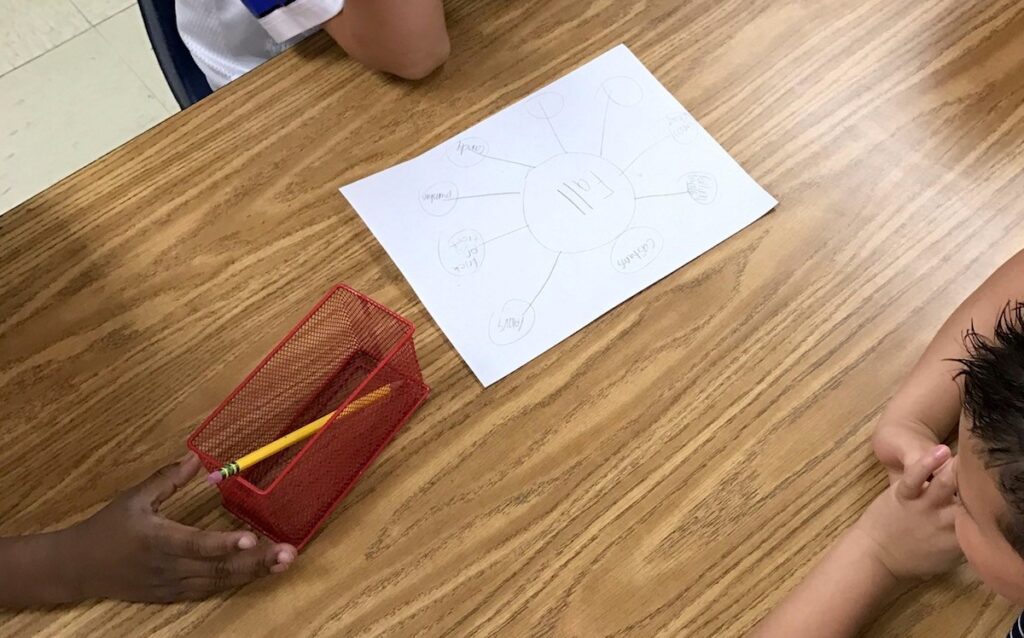
1. Your students will feel valued.
Many times in school, students are told what to do or how to think. Erwin supports this statement when he writes, “In academic classes, students are told how to behave, what to learn, when and how to learn it, and they are assessed in ways that may not take into account the diverse intelligences that exist in every student population.”
Giving students a say will allow them to feel valued. As they contribute to the classroom expectations, they are more likely to follow them. They also will be able to use their critical thinking skills as they develop ideas to share with the class. It is beneficial to have student investment to promote a positive and safe learning environment.
2. Your students will understand the power of collaboration.
Getting students to collaborate on the first day is a great way to show how much you value students working together. As the teacher, you are modeling collaboration as well by getting students involved in developing classroom expectations. Instead of the usual “sit and get” structure, you are providing your students with a meaningful and interactive learning experience.
3. Your students will have a clear understanding of the expectations.
Having students directly involved in the creation of classroom expectations leaves less room for confusion. When students are a direct part of the process, they comprehend everything better. Students won’t just be listening to you explain the expectations, they will be direct participants, brainstorming, discussing, and refining!
Let’s talk about exactly how to generate expectations together.
Here are 3 ways to create shared classroom expectations.
1. Hold a Group Discussion
If this idea is new for you, having a basic classroom discussion is helpful and a comfortable way to start. This method also works especially well for younger elementary students who can’t yet write well. Simply give prompts about rules you have had in the past and ask for additional suggestions.
For example, respect is a typical rule you will find in most classes. Bring up the topic of respect. Ask students, “Why it is important to be respectful in art class?,” or, “What are ways for the class to be respectful in art class?” This questioning technique allows you to guide the discussion but allows for students to gain a deeper understanding and add input about expectations for the classroom.
2. Have Your Students Create Web Charts
To get even more collaborative, allow your students the opportunity to work and brainstorm together.
- First, split your students into groups.
Each group will need a large piece of paper and a writing utensil. - Then, show your students how to create a web chart.
The center circle on the chart should be labeled something like, “Art Room Rules.” Then, show them how to add lines going from the center circle to another circle. These secondary circles will house what they feel are good rules for the art room. For example, “Use supplies correctly.” Let students get to work.

- Finally, have students share out to the class.
After about 5-10 minutes of work time, have students share what their ideas with the class. Write common themes on the board and create a list of classroom expectations from what your students added to their web charts.
3. Conduct a Collaborative Sticky Note Activity
This activity is great for older students who can handle more movement around the room and more independent work.
Here’s what to do:
- Start with a brief discussion about the importance of expectations in the classroom. Write the main expectations your students discuss on the board.
- Create a sticky note for each expectation. These might be things like Respect, Be Kind, Work Hard, etc… Place each sticky note on a different table in your classroom.

- Give your students sticky notes (or even small pieces of scrap paper). Then, ask them to consider each expectation. For each expectation, have them write some specific ways students could follow the expectation in the classroom or why the expectation is important. Have students leave their thoughts at the corresponding tables.
Holding Students Accountable
No matter how you go about creating your classroom expectations, it’s important to come up with some sort of visual or document for your students.
Here are two ways to do that.
- Create a classroom visual.
Your classes will likely come up with similar expectations. Therefore, you can create a poster to lay everything out and display it in your room. You could also create a verbal pledge for your students or have them recite the expectations and acknowledge that they will follow them. - Create a contract.
If you want to save your wall space, have students sign a contract with the expectations they designed for the classroom. You can give each student an individual copy or have a copy for each class with a line for each student’s name. You can post this in the room or refer to it when needed. If you are low on paper, try a verbal agreement.
Both of these methods allow you to have an easy reference if students forget the rules. If things are going awry, you can point to your poster or contract and conduct a mini-class targeted toward the expectations that need attention. It’s powerful to be able to refer to the expectations and remind students they were involved in the creation of them.
What do you do on the first day of class when it comes to classroom expectations?
What other benefits are there to creating shared classroom expectations with students?
Magazine articles and podcasts are opinions of professional education contributors and do not necessarily represent the position of the Art of Education University (AOEU) or its academic offerings. Contributors use terms in the way they are most often talked about in the scope of their educational experiences.
